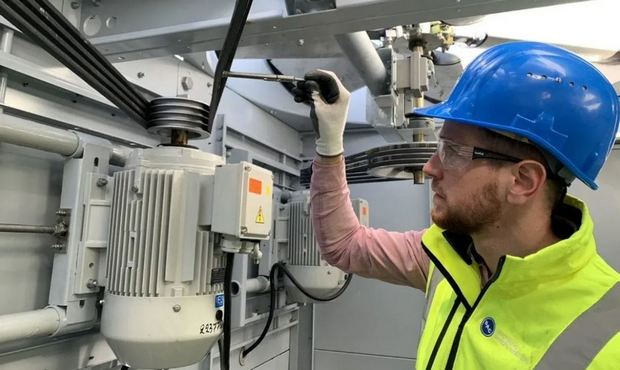Preventive maintenance is key for evaporative condenser efficiency

Preventive maintenance of evaporative condensers is key to ensuring the efficient, reliable and safe operation of refrigeration equipment, according to Steven Kline, Product Applications Manager at Baltimore Aircoil Company (BAC), a Maryland (U.S.)-based manufacturer of condensers and other cooling systems.
In a recent essay written by Kline – titled “Maintaining the Mechanical Integrity of Evaporative Condensers” – he also highlighted the role of regular inspections and system upkeep for avoiding the leakage of refrigerants, such as ammonia/NHsub>3 (R717).
“A comprehensive program of routine preventive maintenance will keep refrigeration systems performing at peak efficiency, maximize system operating life, and reduce unplanned downtime due to equipment failure,” he said. “Do not wait until the condenser fails to perform maintenance.”
According to previous analysis by Kline, water-cooled condensers that use evaporative heat rejection “significantly” reduce energy consumption compared to “similarly sized systems utilizing either air-cooled or adiabatic heat rejection.”
In fact, his latest essay states that by lowering system condensing temperatures and compressor horsepower requirements, evaporative condensers can reduce energy consumption by up to 15% compared to air-cooling systems.
Kline urged that to maximize system efficiency as well as operational time, hygiene and safety equipment must be well maintained.
In his essay, Kline explained that there are 10 areas of inspection that “should be part of any evaporative condenser preventive maintenance program.”
According to Kline, inspectors should look for adequate anchors and supports for unit; corrosion of enclosure, tubes, piping and supports; scale build-up on tube bundle; cracks in fan assemblies; scale or dirt build-up in drift eliminators and the water sump; safety devices; electrical connections; and spray nozzles. Shafts, bearings, motor mounts, belts, fasteners and all isolation and purge valves should also be inspected.
While the frequency of maintenance will depend on a variety of factors – such as water and air quality – Kline recommends that inspection of the evaporative condenser should be conducted on an annual basis, with more frequent examination if warranted by manufacturer guidance or other circumstances.
